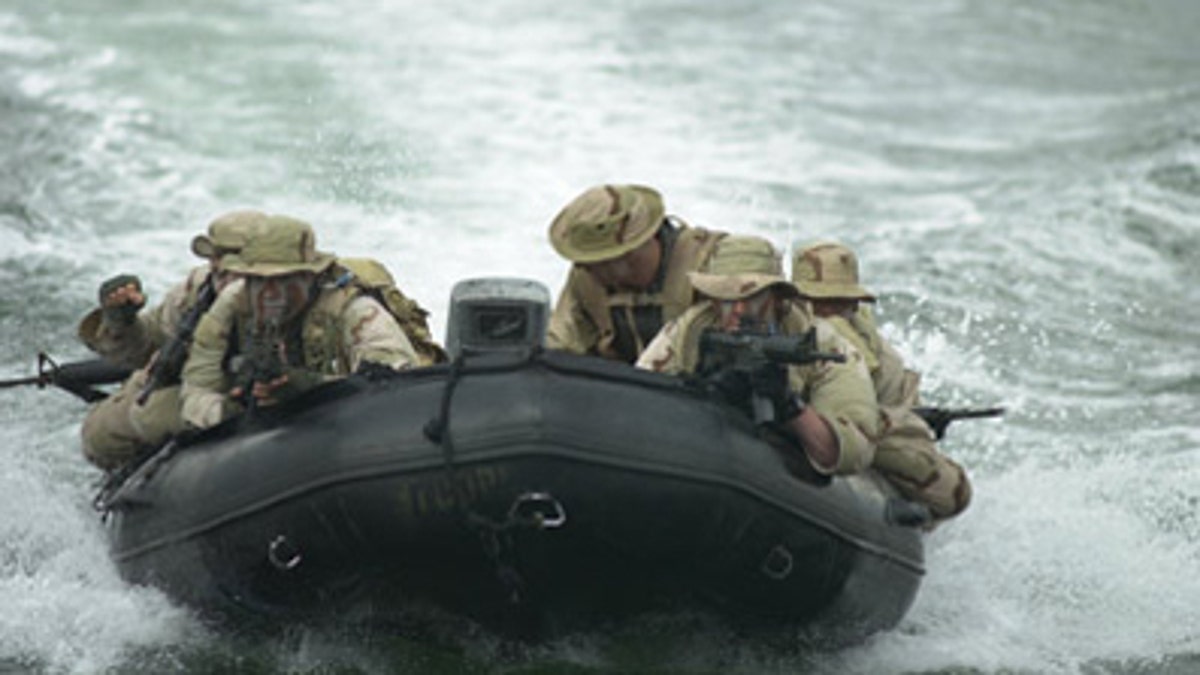
(Official U.S. Navy photo)
The Navy SEALs who carried out this week’s capture or kill raid on Usama Bin Laden’s compound in Pakistan are some of the most physically fit and mentally equipped soldiers on the planet – and for good reason.
These men, known as the Navy’s sea, air, land commandos, are put through what many experts regard as the toughest and most rigorous training in the world.
It involves a 24-week course known as BUD/S, which stands for Basic Underwater Demolition/SEALs. This period includes an indoctrination course, followed by a conditioning phase and land warfare phase. If that wasn’t enough, the infamous “Hell Week” is thrown into the mix as well.
This phase of the training is the by far the harshest, with 132 hours of continuous physical training and less than four hours of sleep. This is not only a true test of the limits of a person’s physical capabilities, but it’s really about their mental toughness.
According to one Navy SEAL instructor, “Hell Week” requires 90 percent mental and only 10 percent physical strength and capability.
Dr. Mark Russell, a former Navy psychologist and U.S. Marine, who retired after nearly 27 years in the military, completely agrees.
“They expose these guys to very arduous physical exercises to see how well they can tolerate these conditions both physically and mentally, and while some ‘wash out’ during this process, the ones that are more mentally tough make it,” he told FoxNews.com.
And it’s true, only the mentally tough survive. It’s estimated that as many as 75 to 80 percent of SEAL recruits ‘wash out’ – or fail – during this stage of training.
What kind of person does it take to become a SEAL?
Parachute jumps, cold weather training, combat swimmer training, SERE (Survival, Evasion, Resistance and Escape training) – these are just a few of the courses that SEALs have to endure.
“Special forces have to have a high level of what we call hardiness or resilience,” Russell, now a psychology professor at Antioch University in Seattle, said. “Someone who has true grit, and has the ability to persevere even in the face of adversity. Someone who’s not easily overwhelmed. This person must have a locus of control – which is the belief that you can control your problems – a sense of what happens to you is by your actions. A sense of mastery. You have to enjoy mastering challenges both mental and physical… they look at a challenge as an opportunity to improve themselves, as a way to endure.”
And what about fear?
“There may be fear there but they’ve learned to compartmentalize it and not let their fear overtake them,” Russell explained. “To suppress the fear, they use different strategies. The SEALs that I have talked to have felt fear or anxiety, but their training takes over and allows them to overcome whatever fear response they have.”
And that’s most likely what happened when that team of SEALs stormed into Bin Laden’s compound this week. They pushed their fears aside, and their training took over despite the fact that there was a live stream of the operation being fed into the White House; despite the fact that one of their helicopters had just crashed minutes before the raid; and despite the reality that they could be killed at any moment— these highly-trained men persevered and successfully carried out the mission.
“What most people would see as too much – these guys look at it as a challenge. They have a real grit, a stick-to-iveness,” Russell said.
Currently, there are about 2,500 active duty Navy SEALs with nine SEAL teams dispersed throughout the East and West Coasts. Every year, about 1,000 men start SEAL training with only 200 to 250 making it through the grueling process.
Click here to see more about the physical requirements to become a Navy SEAL.
